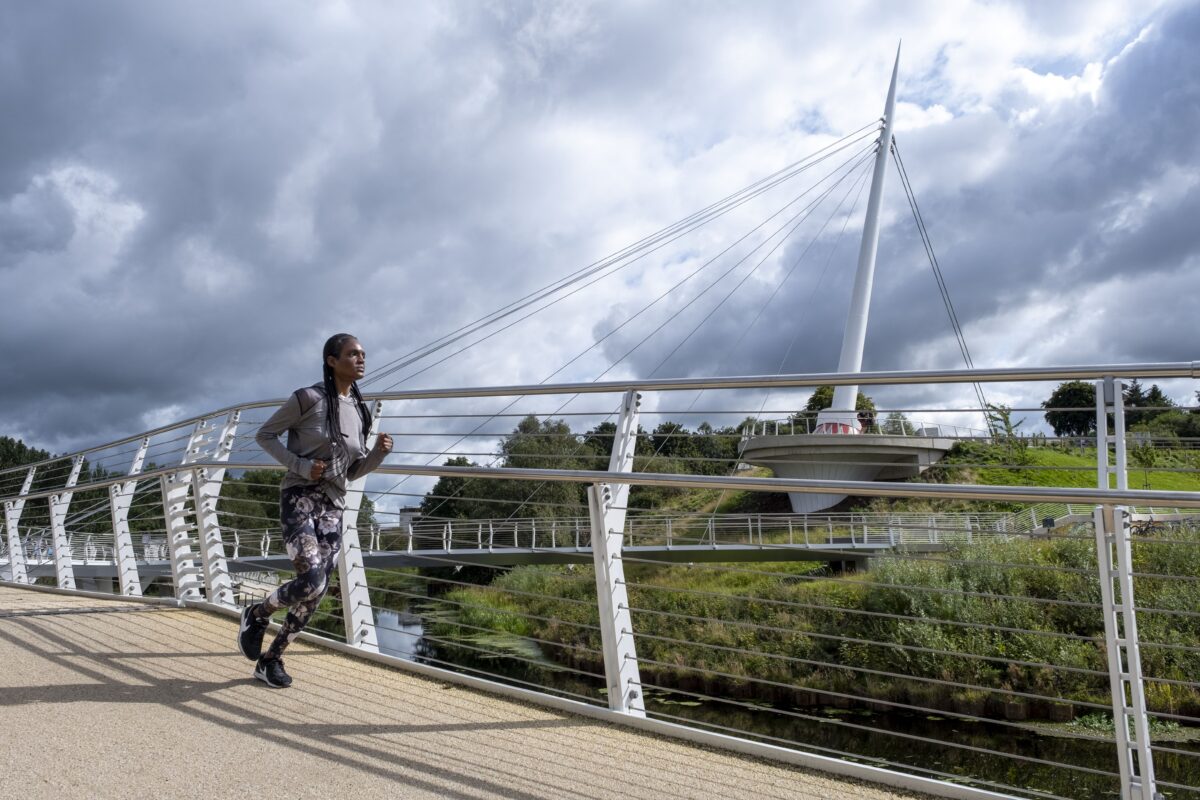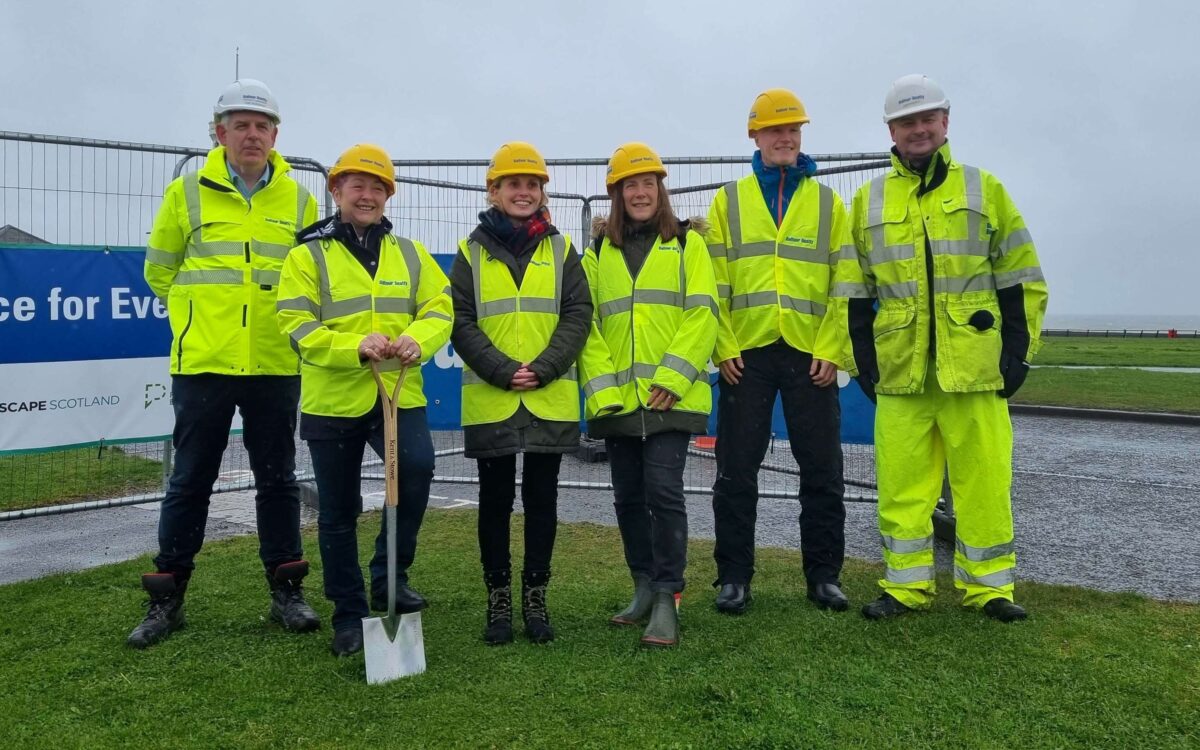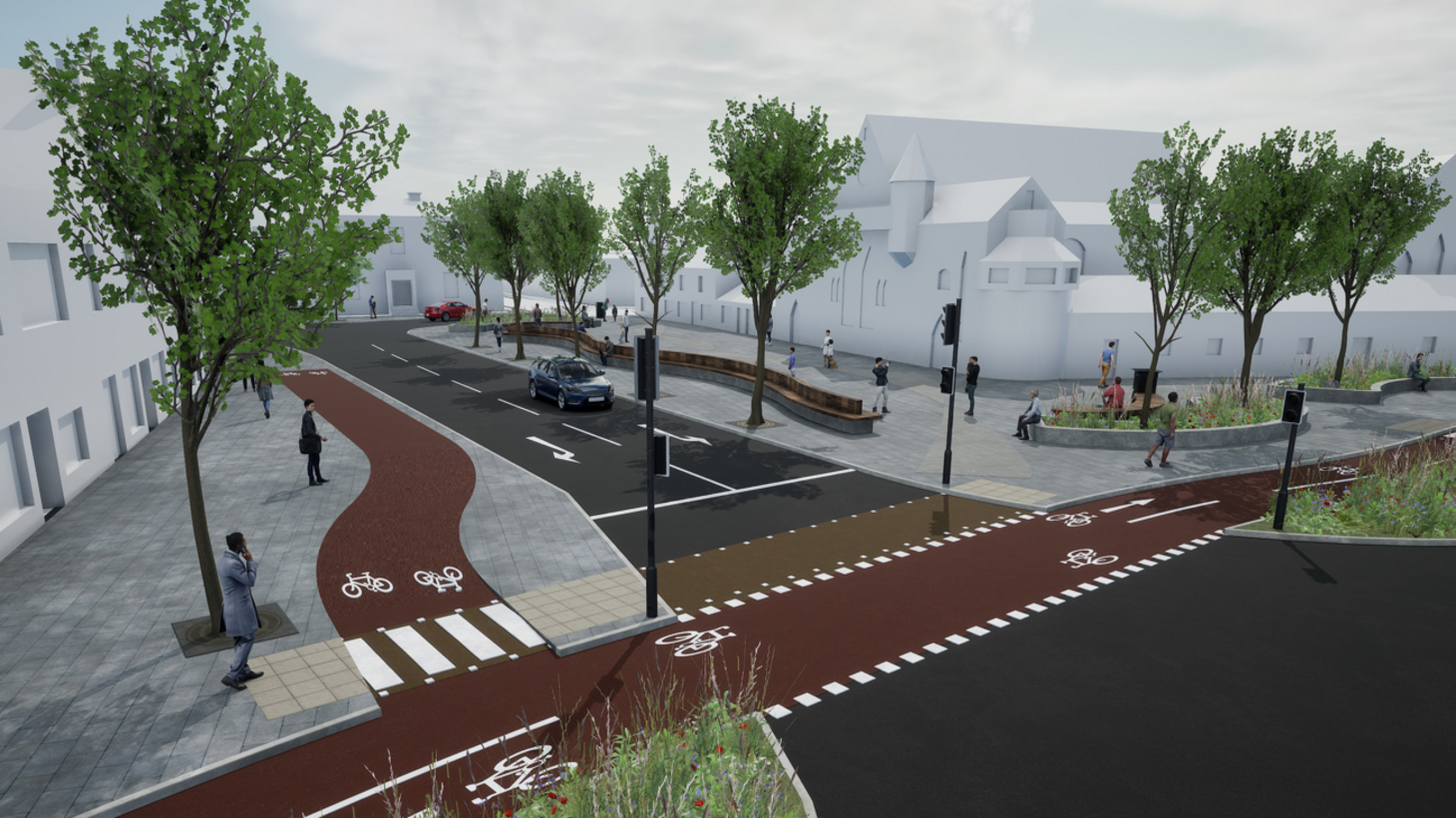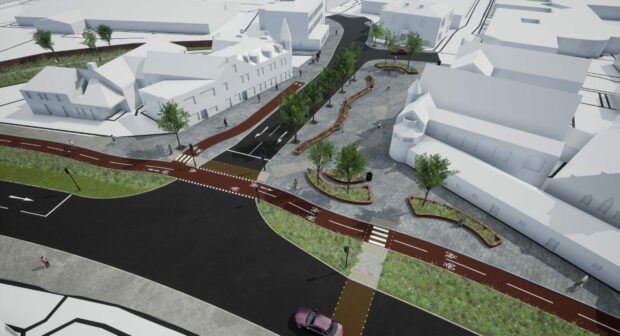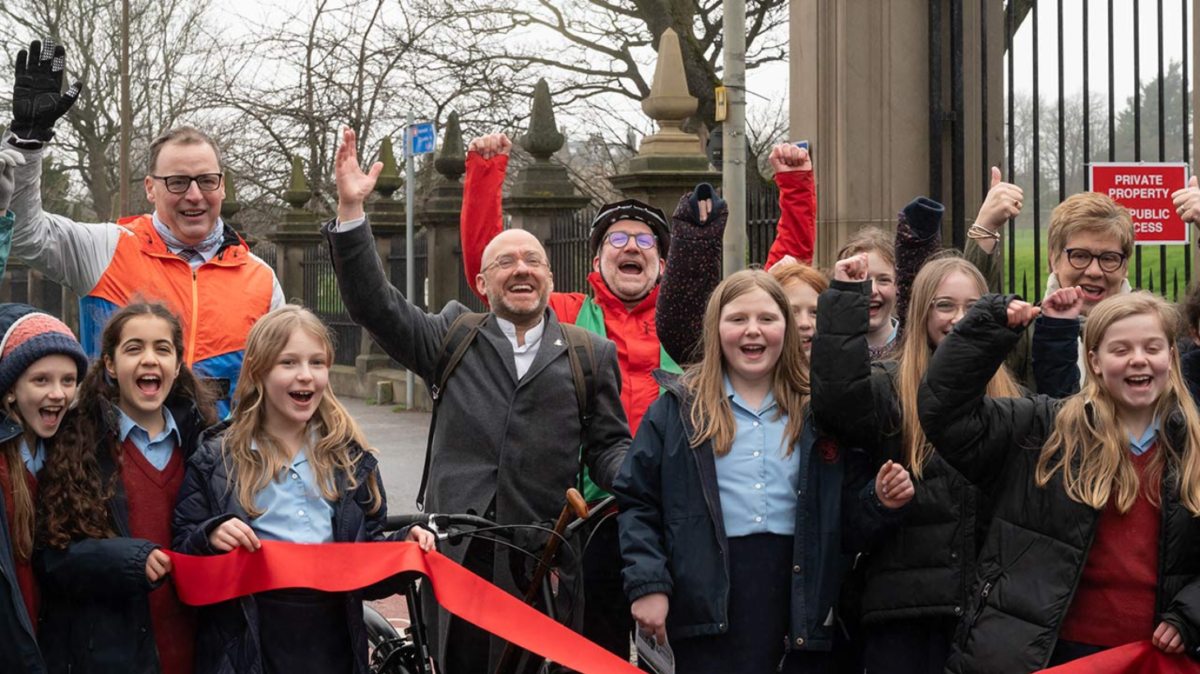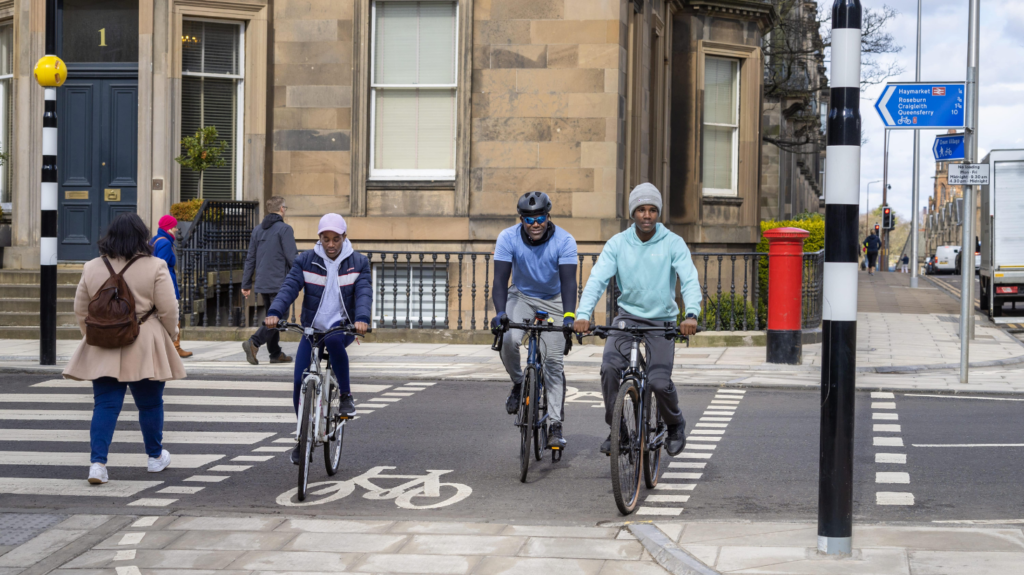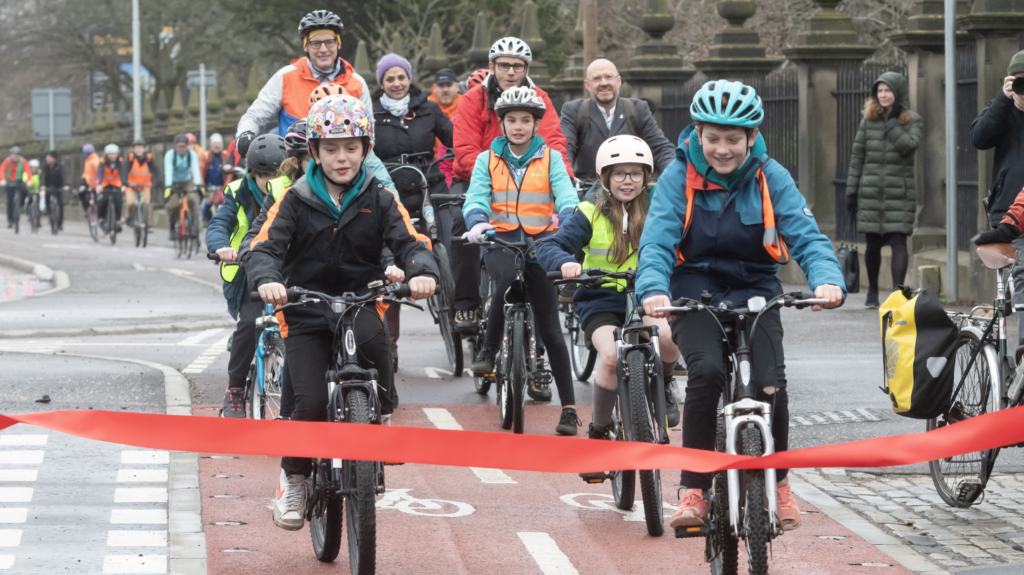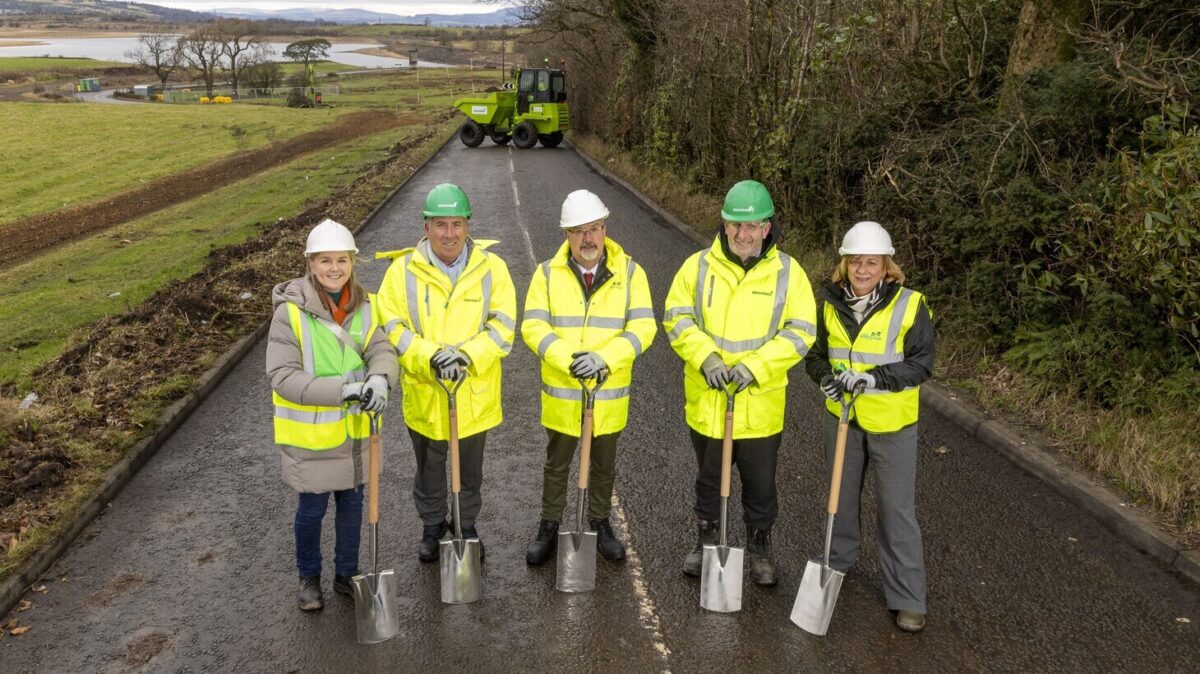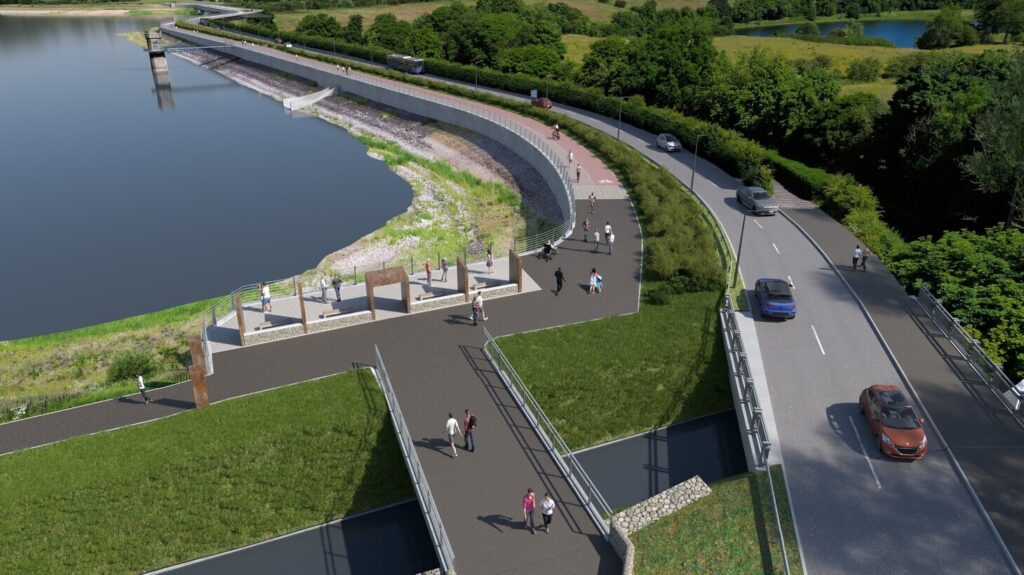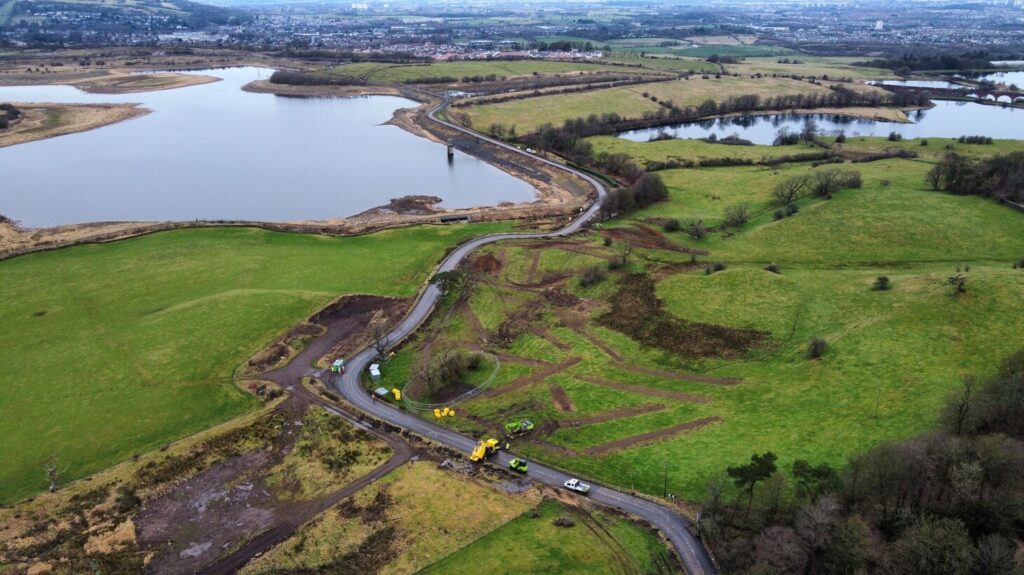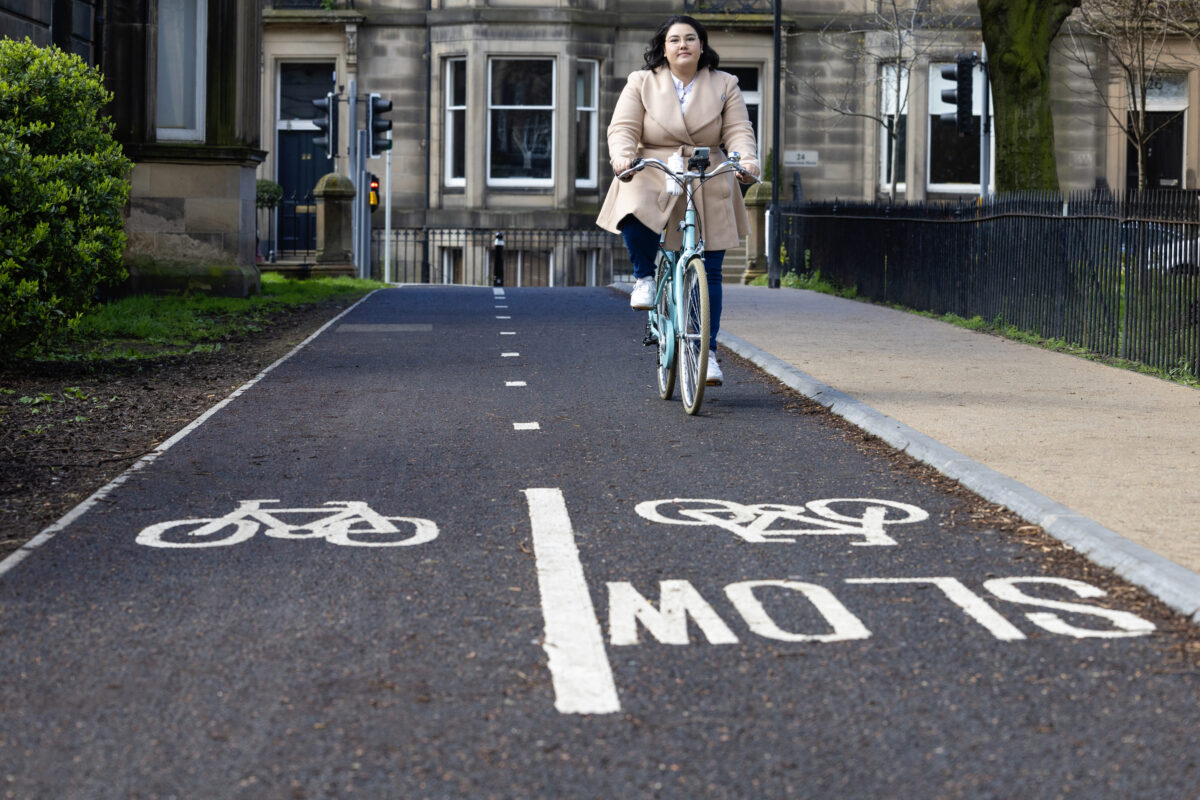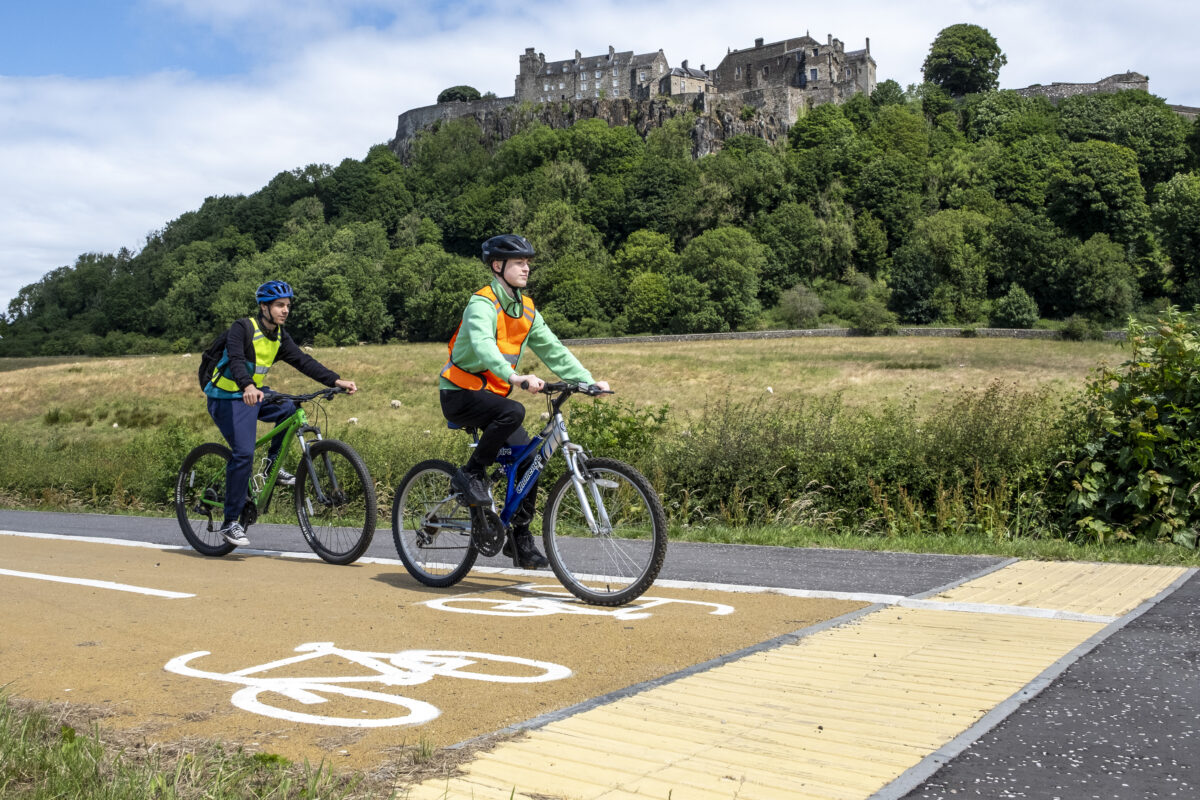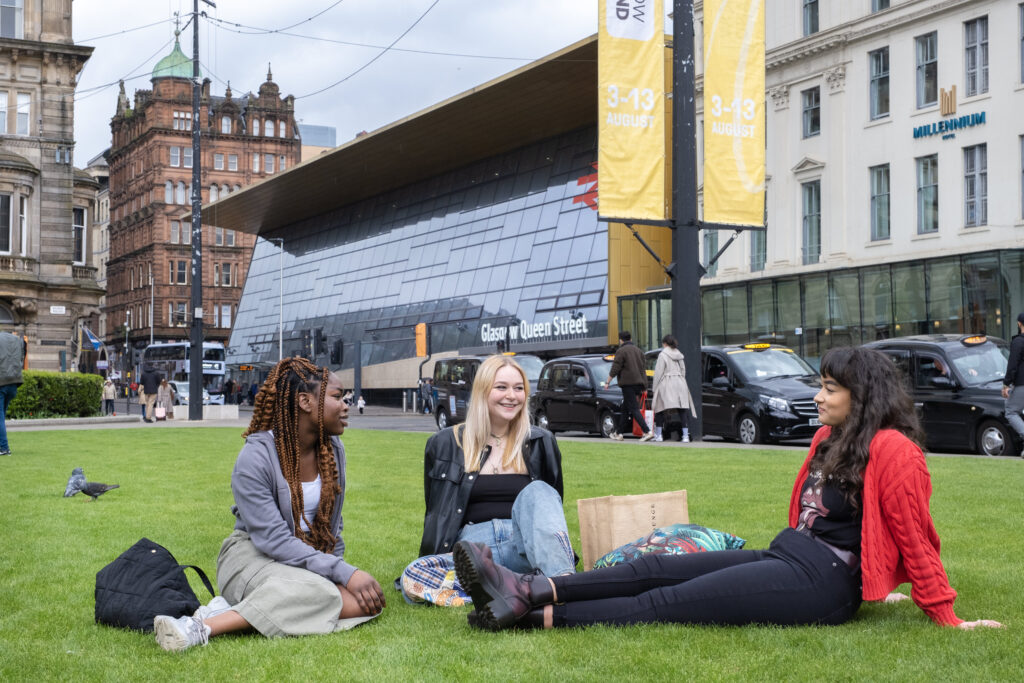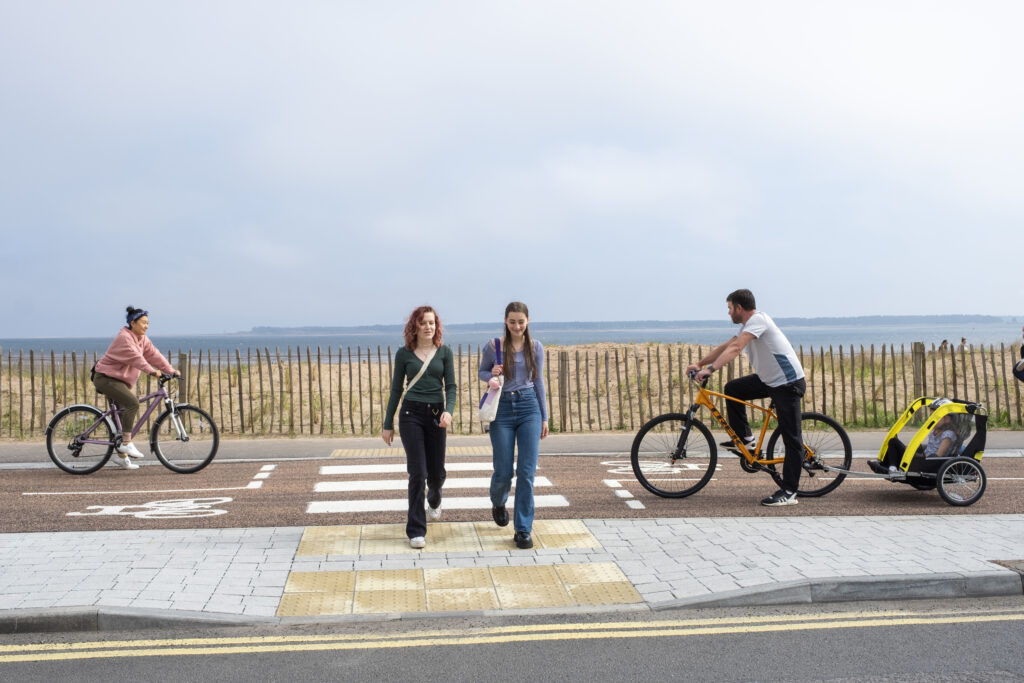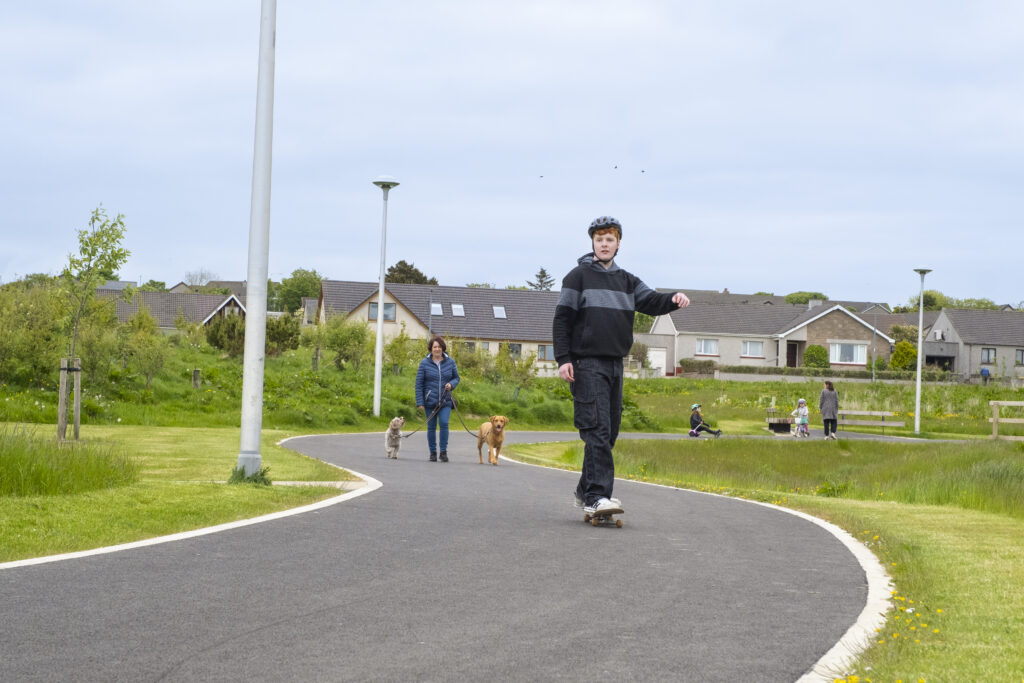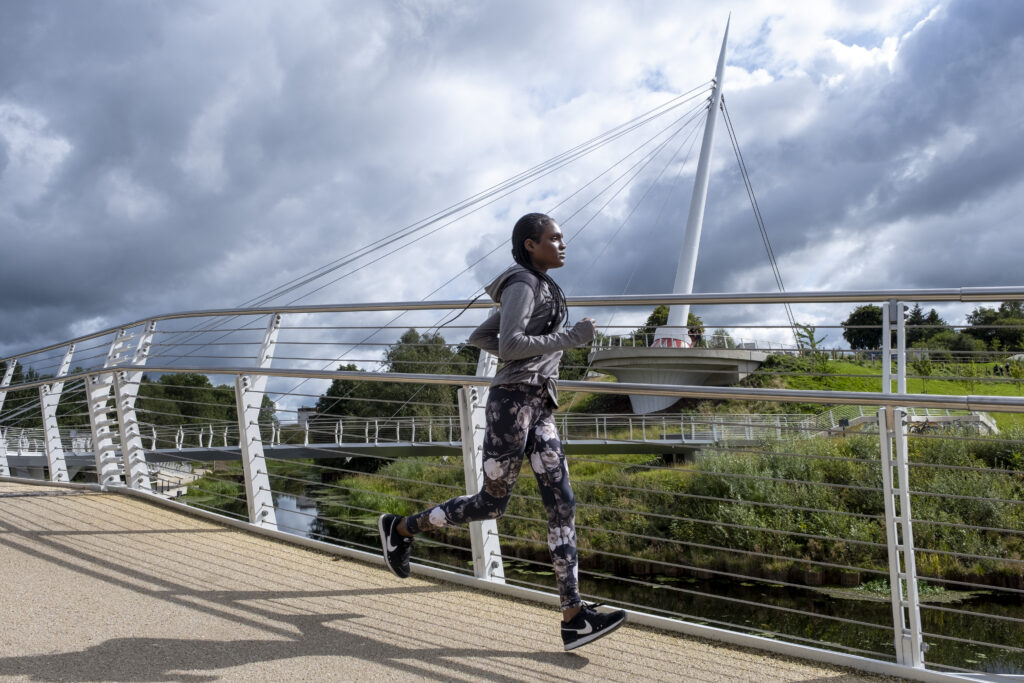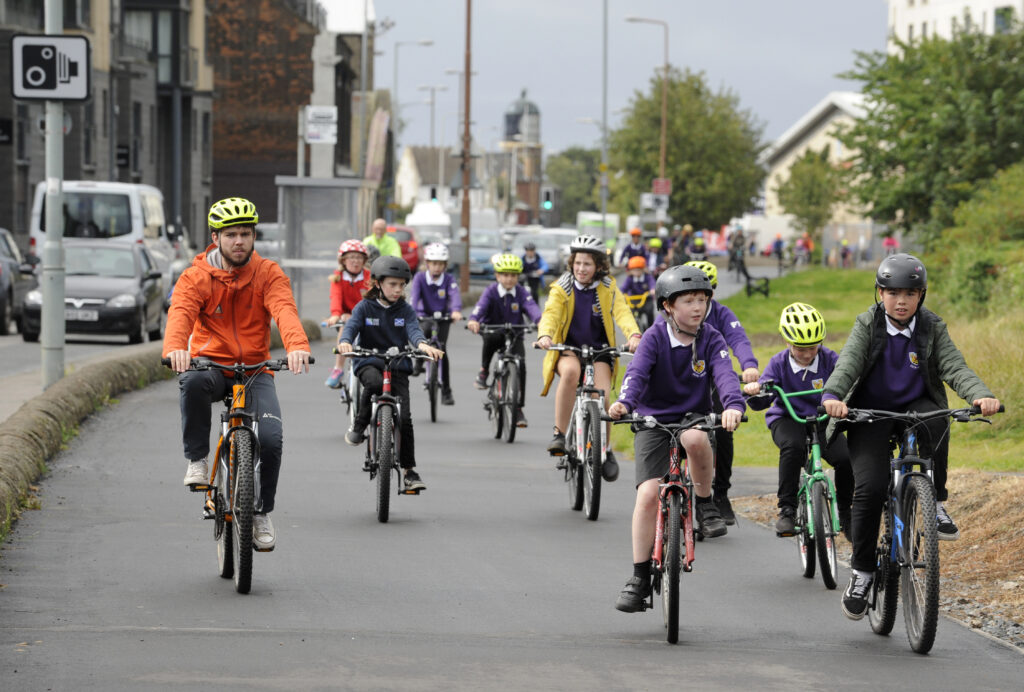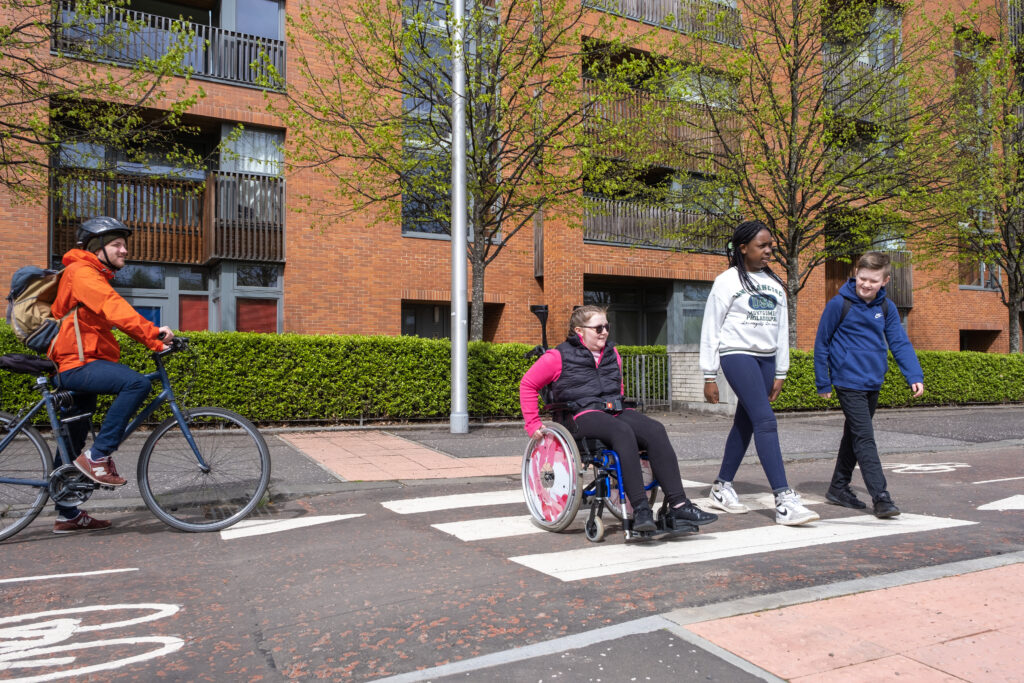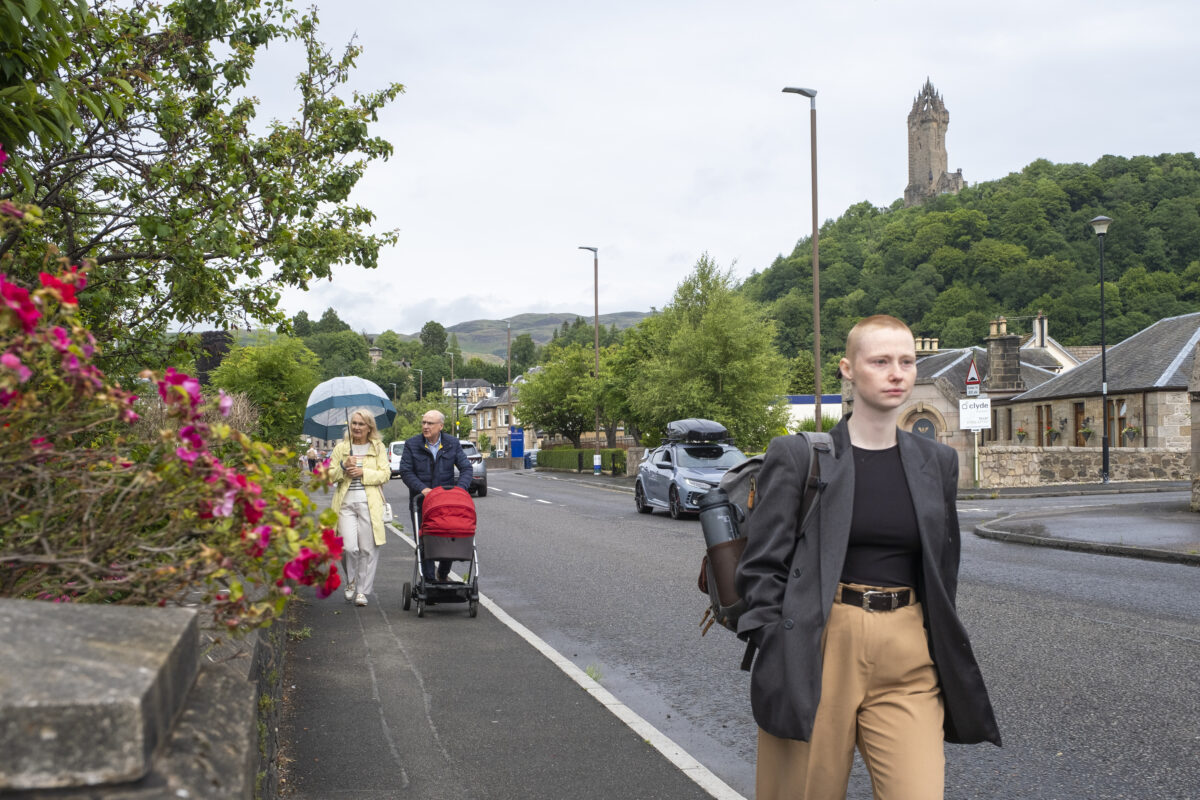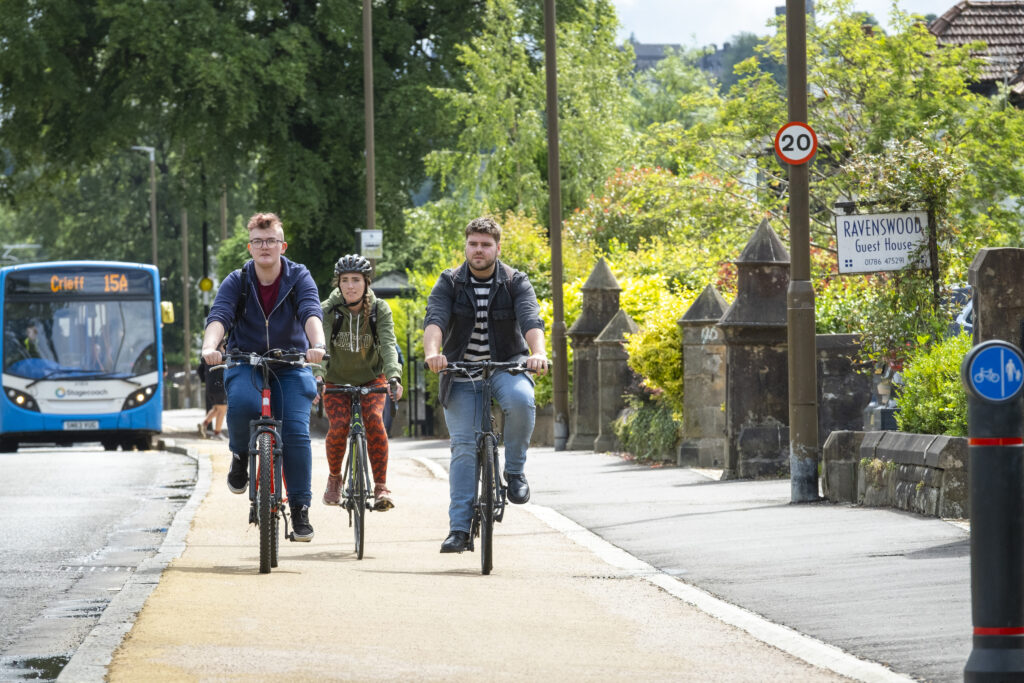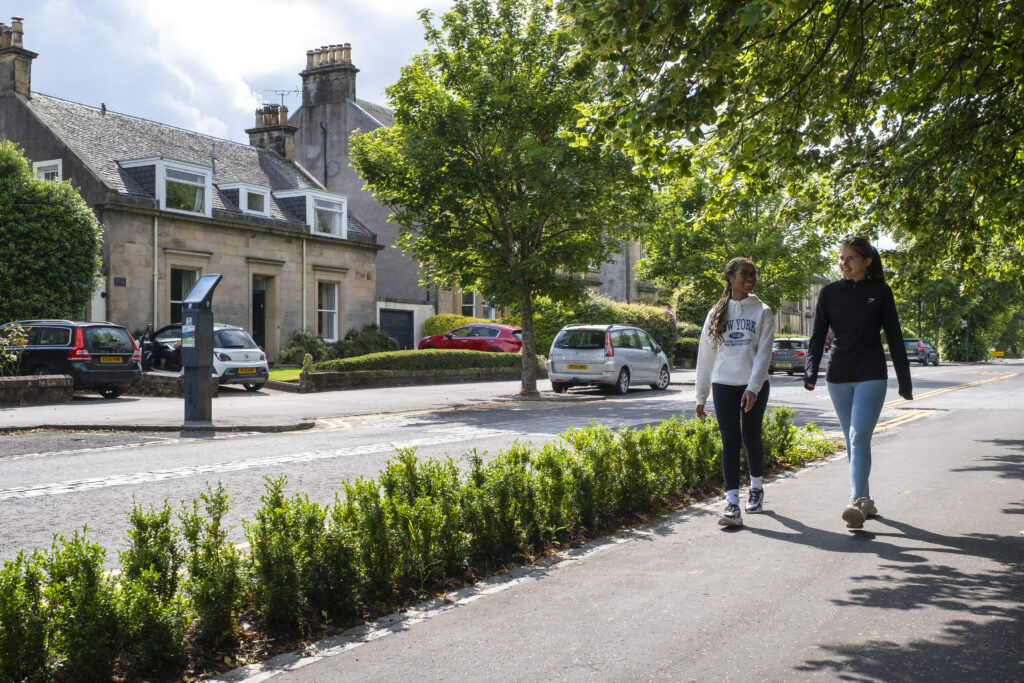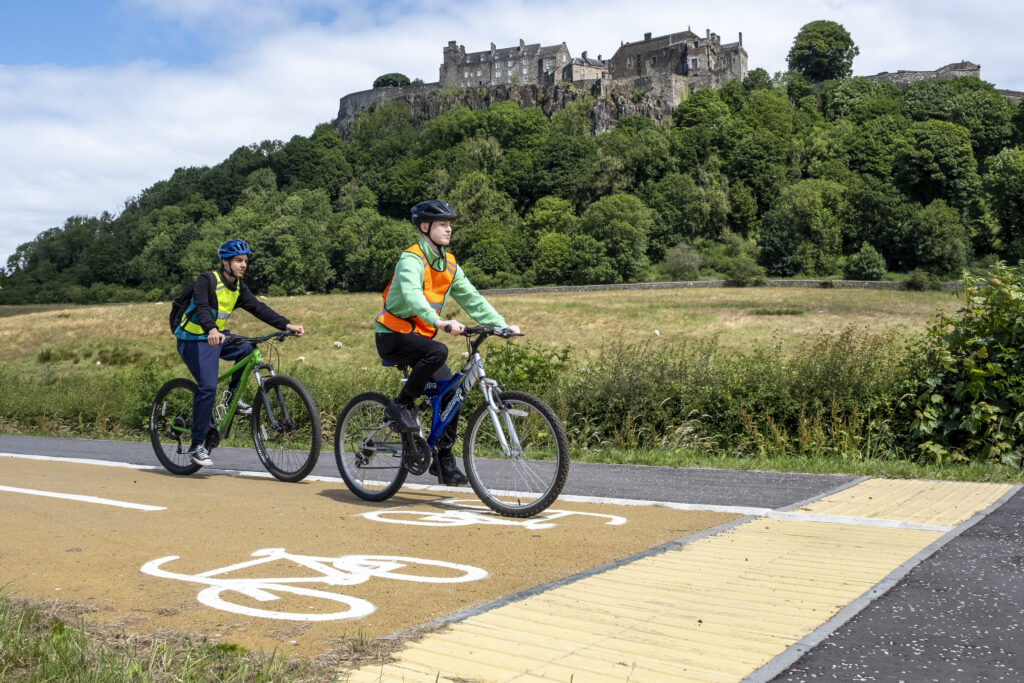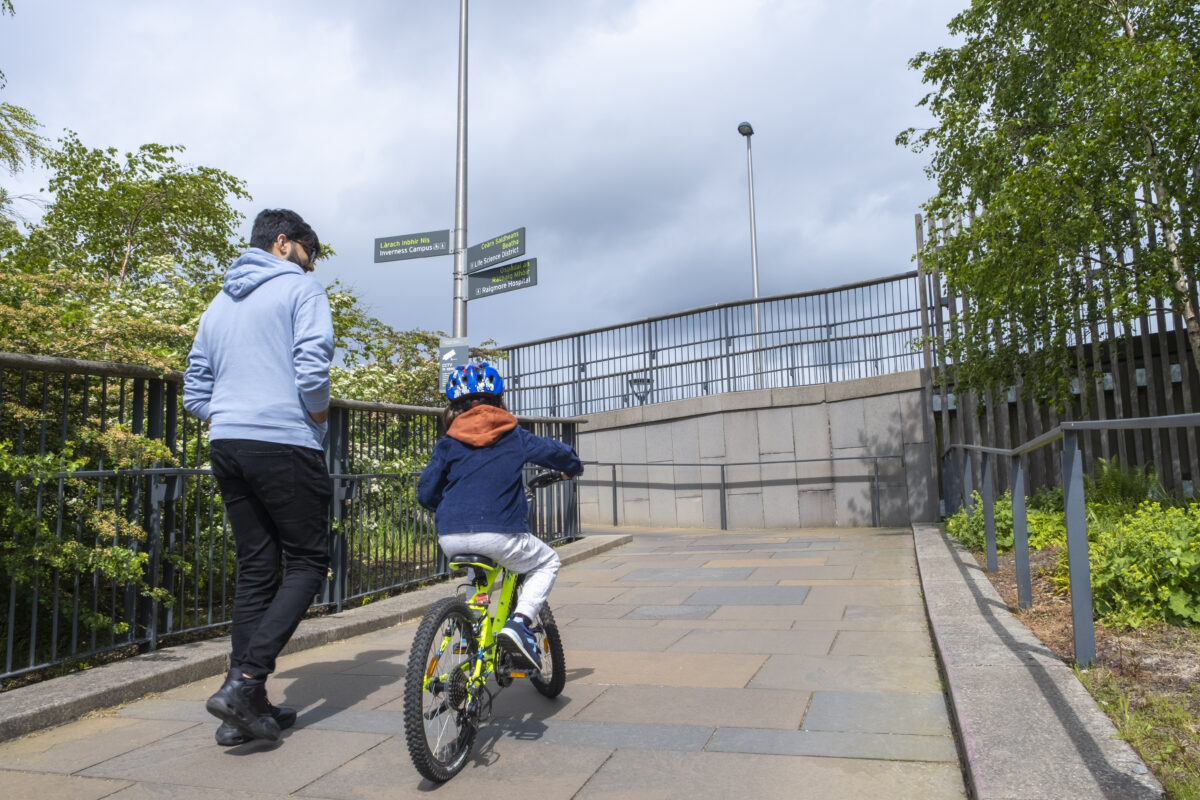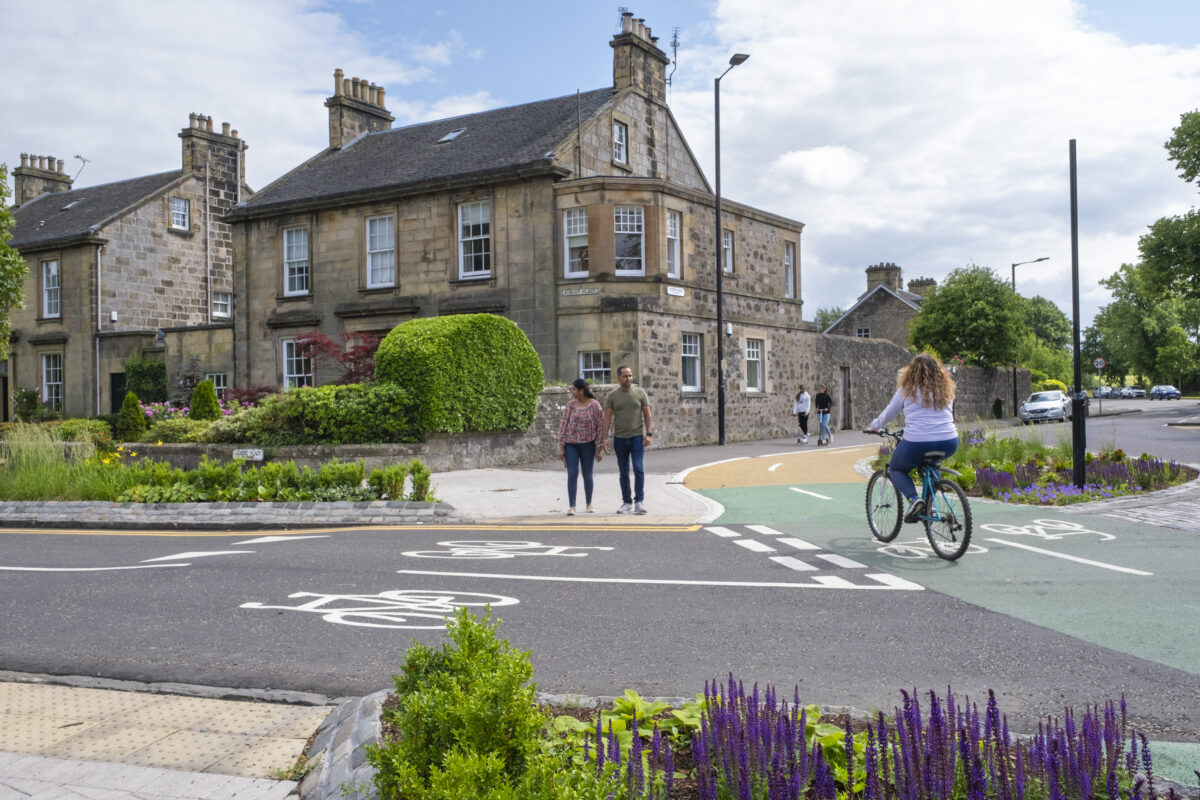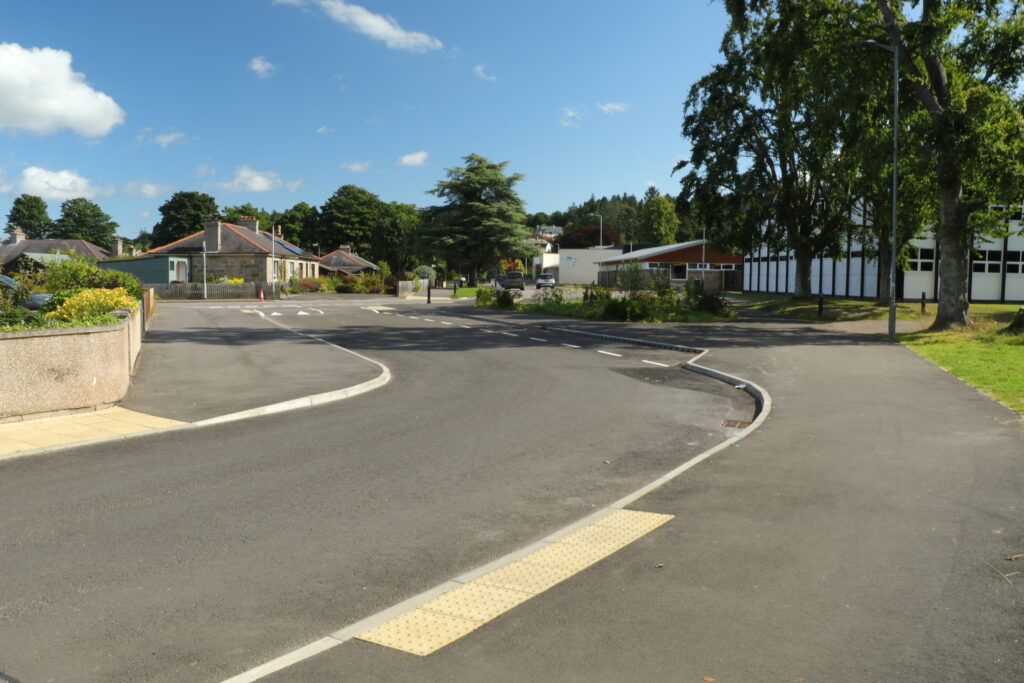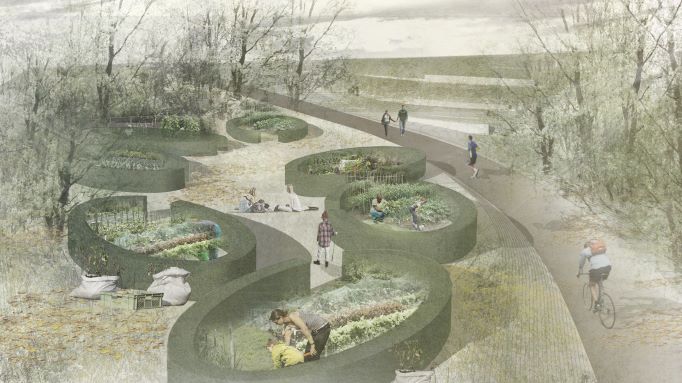Following a year of rigorous analysis carried out by Sustrans’ Research and Monitoring Unit (RMU), the 2022-23 evaluation report for the Places for Everyone programme is now available to the public.
The latest findings offer key insights into some of the delivery activities Places for Everyone has carried out across the lifecycle of the programme, including how the programme has contributed to overarching Scottish Government objectives in active travel as well as Places for Everyone’s own benchmark outcomes.
Backed by Transport Scotland, the Places for Everyone programme provides millions of pounds to local authorities and community groups every year in order to help create new and accessible walking, wheeling and cycling infrastructure right across Scotland, from the Scottish Borders to the Western Isles.
In order to demonstrate the impact of this funding, the 2022-23 report draws on monitoring data collected from a variety of different infrastructure projects delivered by the programme, as well as five in-depth project case studies. Data is collected by Sustrans RMU and by delivery partners.
What are the findings?
Overall, the results are incredibly positive.
Measured against Scottish Government objectives, our analysis reveals an overall increase in route usage across Places for Everyone projects in the years following construction.
Likewise, a majority of route users feel safe in using Places for Everyone routes.
This was shown across different travel modes (i.e. walking and cycling) as well as demographic factors including age and gender.
This is further supported by the finding of a significant reduction in casualty rates following Places for Everyone project delivery.
In terms of the sheer amount of hard infrastructure that has been delivered through the programme, around 154km of protected and accessible routes had been created by the end of 2022-23. This compares to 54km by the end of 2016-17.
Another key highlight demonstrates that projects are supported by the communities in which they are delivered. From a sample of projects, almost three quarters of local residents supported proposals and felt their views had been taken into account as part of project development.
Turning to health outcomes, reporting not only found overall reduced emissions across a sample of projects following delivery but also revealed a significant increase in the number of route users who agreed projects had helped increase their levels of physical activity.
Taken together, these results evidence the value that Places for Everyone brings in increasing walking, wheeling and cycling journeys across Scotland, and consistently demonstrates the ability of the programme to fulfil its stated objectives.
What about specific projects?
Post-construction case studies from projects in and around Glasgow featured heavily in the report this year.
The newly completed South City Way, which was delivered in partnership with Glasgow City Council, creating a safe and accessible cycleway from Queen’s Park to the heart of the city centre, was amongst those included.
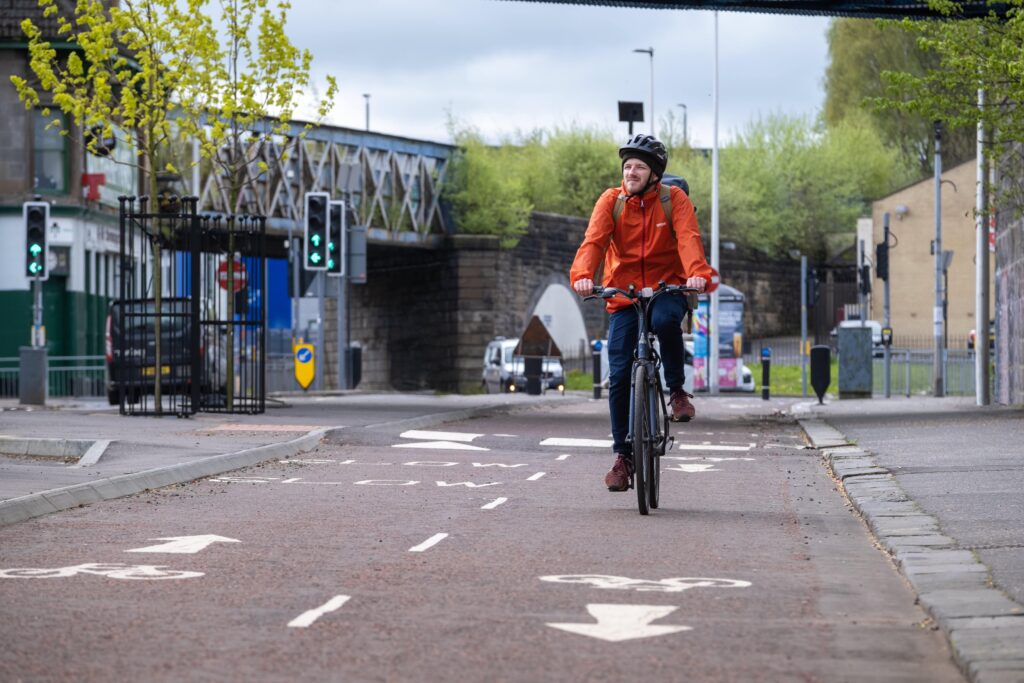
As well as a 20% reduction in vehicles travelling over the speed limit, monitoring here shows that active travel journeys along the route have increased by 30% following construction.
In terms of cutting carbon emissions, findings also revealed a 53% decrease in CO2 since the South City Way was completed.
Likewise, analysis was conducted for Stockingfield Bridge in the North of Glasgow.
Delivered by Scottish Canals, the new bridge provides a quick and convenient off-road walking, wheeling and cycling link via the Forth and Clyde Canal network.
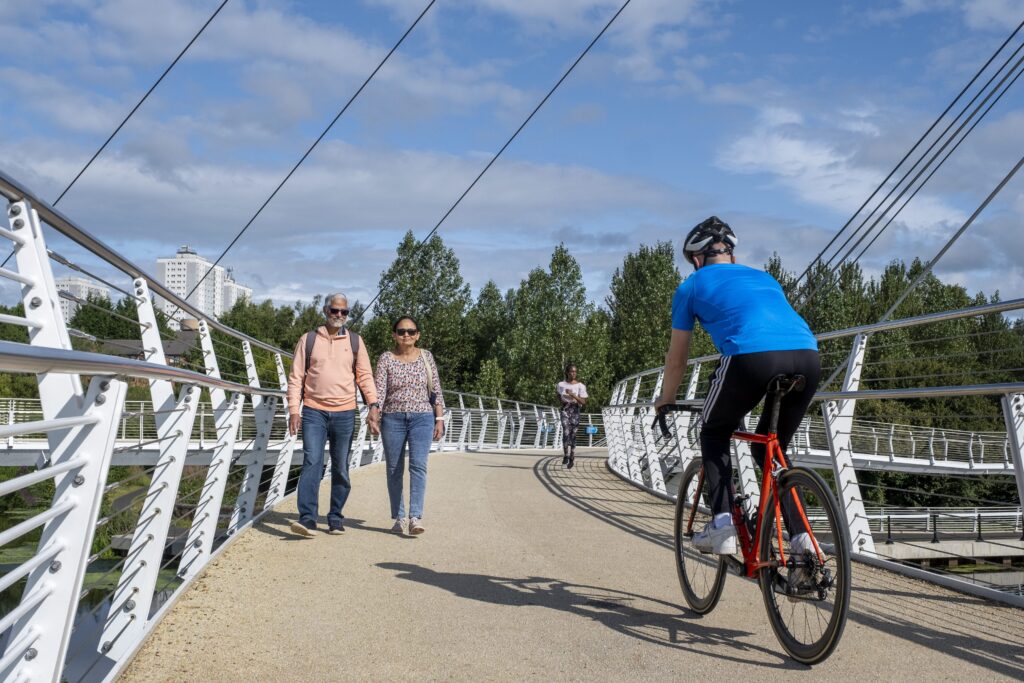
Results here demonstrated a significant increase in trips under 4 miles, as well as trips for work, school and visiting friends and family.
The Bowline in West Dunbartonshire, also delivered by Scottish Canals, aimed to create an attractive and traffic-free connection between Glasgow city centre and Loch Lomond and the Trossachs National Park.
Analysis of route usage show huge success in this regard, with trips almost doubling along the traffic-free route since its completion in late 2021.
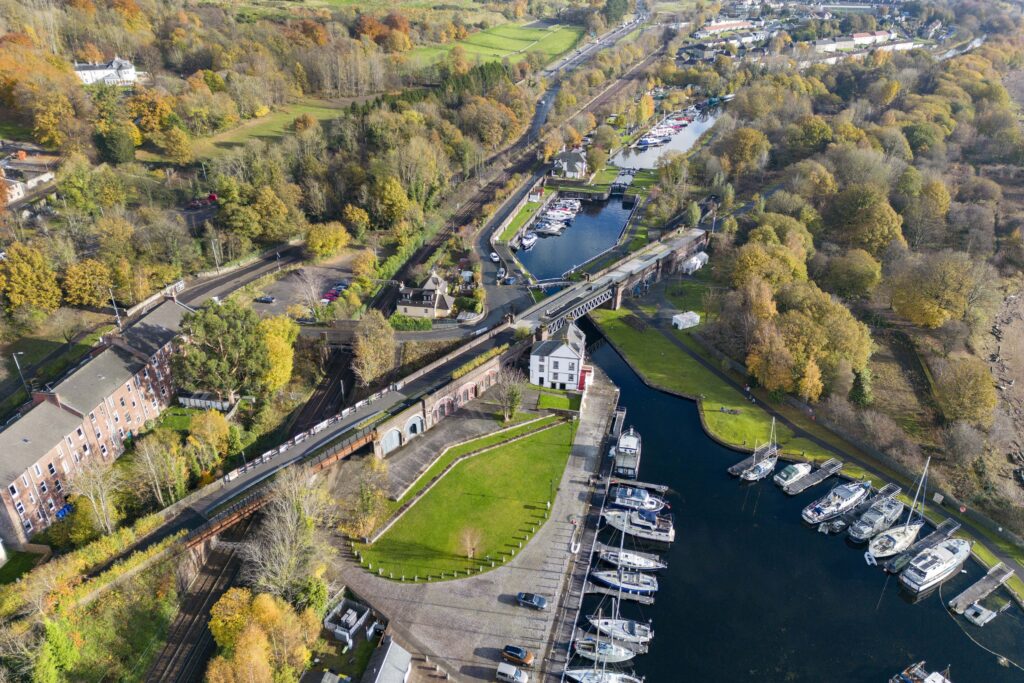
Outside of the cities, Gynack Gardens in Kingussie has also evidenced a truly impressive impact.
Working in partnership with The Highland Council and Cycle Friendly Kingussie, the Gynack Gardens project aimed to offer residents and visitors an attractive greenspace whilst also boosting active travel.
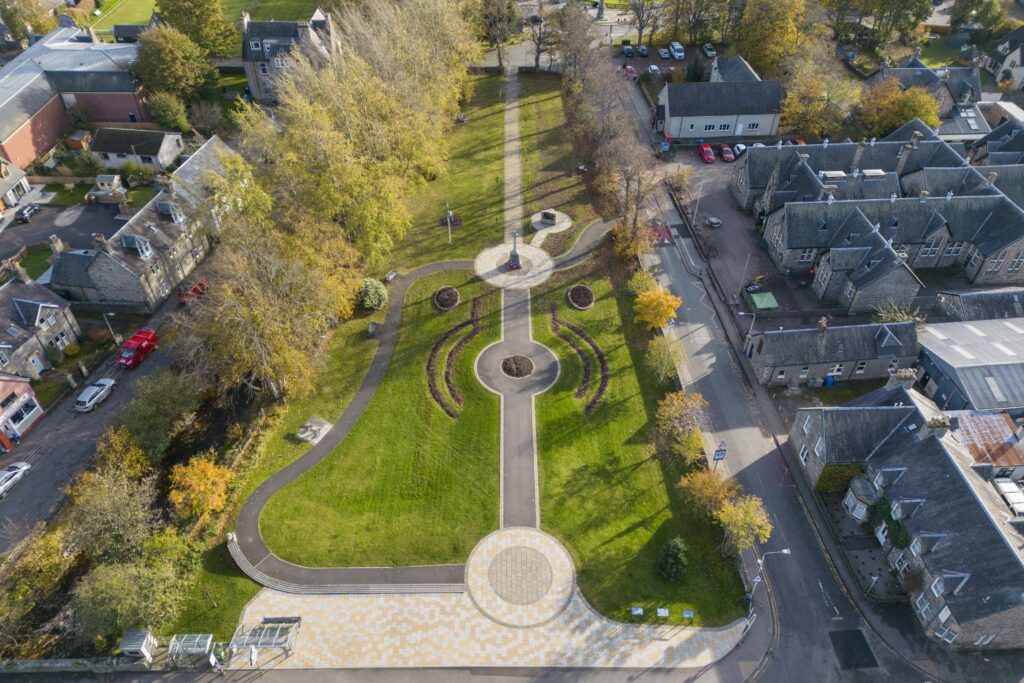
Since completion, the new park has helped support a 270% increase in walking, wheeling and cycling in the project area.
The park also rated highly on user perceptions of safety, accessibility, and the extent to which the space has enhanced the local area.
The Cumbernauld Green Route, completed at the close of 2022 in partnership with North Lanarkshire Council and Green Action Trust, provides a safe and convenient connection between the centre of Cumbernauld and surrounding communities, whilst also enhancing local greenspace.
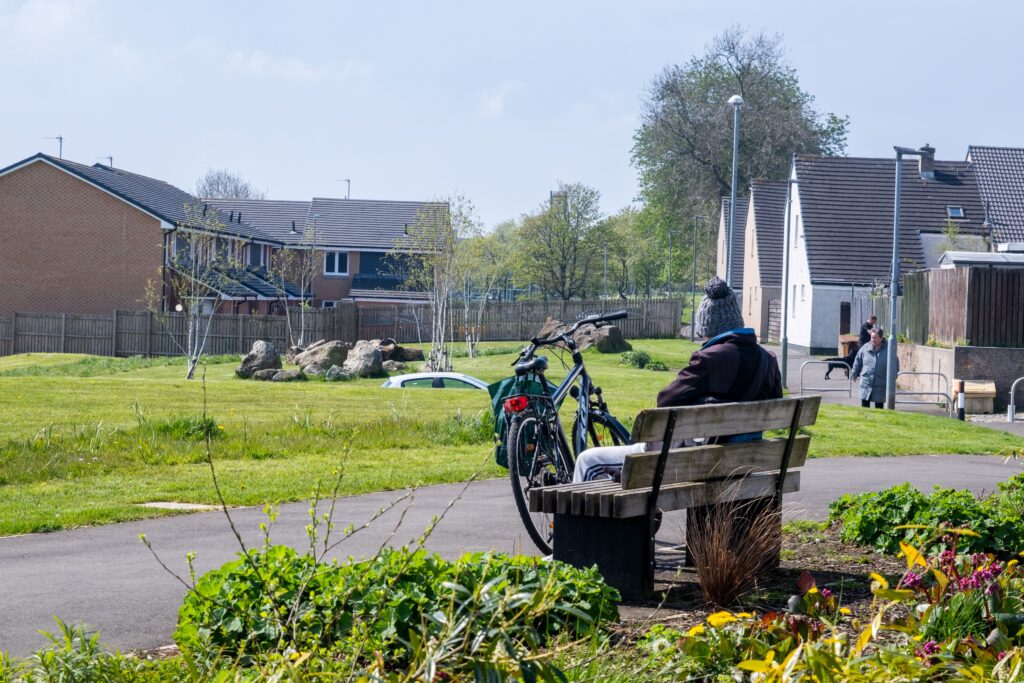
In evidence of its success, monitoring shows a marked increase in route usage following its delivery, as well as high ratings in on quality by those using the path.
Where can I read the report?
The Places for Everyone 2022-23 infrastructure impact summary report is available to download below.
An easy read version of the report is also available below.
The full Places for Everyone 2022-23 infrastructure impact report is available on request. Please contact Nigel.Donnell@Sustrans.org.uk or Jess.Acton@Sustrans.org.uk
